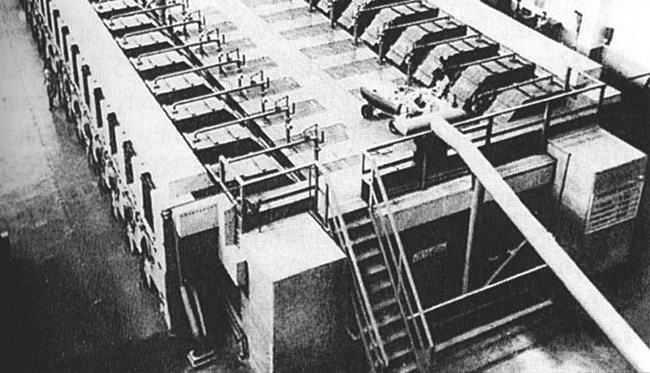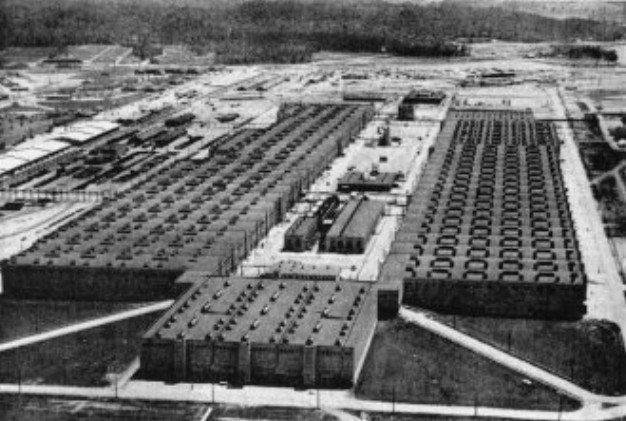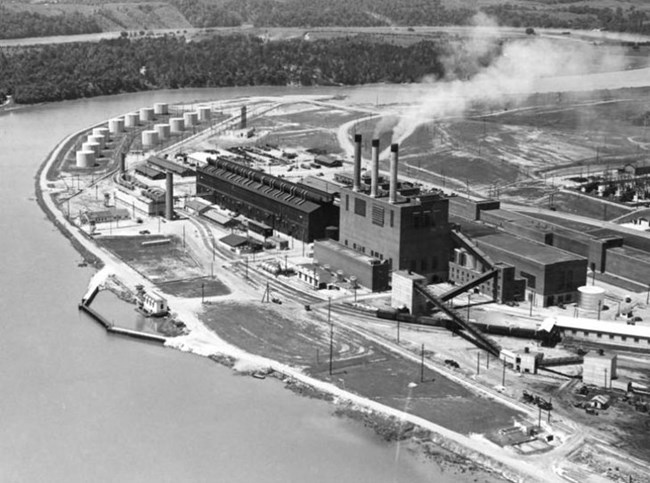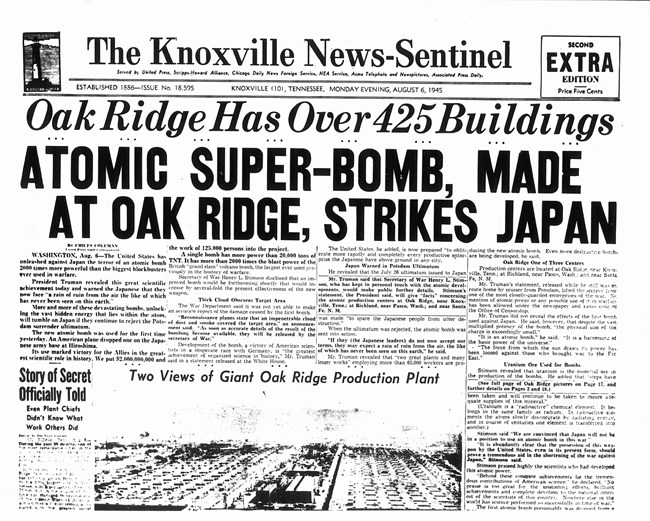Last updated: April 4, 2023
Article
Manhattan Project Science at Oak Ridge

US DEPARTMENT OF ENERGY

US DEPARTMENT OF ENERGY
Y-12 Electromagnetic Isotope Separation Plant
The construction of the Y-12 Plant was founded on the need for a facility that could perform electromagnetic isotope separation. Developed by University of California at Berkeley scientist Ernest Lawrence, electromagnetic isotope separation was based on the concept that lighter uranium atoms (U-235) would move more tightly in a circle than heavier uranium atoms (U-238). The creation of a cyclotron, a vacuum tank with a strong magnetic field, could separate the atoms into two paths as they revolved. The lighter U-235 was captured in a separate container from the heavier U-238. Lawrence had created a mass spectrometer cyclotron, or calutron, at his Berkeley lab in late-1941, but Manhattan Project scientists determined that a much larger facility would be required to produce the separated U235 needed to develop an atomic bomb in a timely fashion. This necessitated construction of the much larger Y-12 Plant, which began on February 18, 1943.At its peak, the Y-12 Plant employed 22,000 people to operate the calutrons, nicknamed “racetracks” for their oval shape. While the facility at Berkeley had only been operated by scientists, a wartime labor shortage meant that young women, many of whom had just graduated high school, were assigned the task of operating the calutrons at Oak Ridge, Tennessee. These women, who earned the nickname “Calutron Girls”, were vital to the development of enriched uranium, a key component of the Little Boy atomic bomb.

US DEPARTMENT OF ENERGY
K-25 Gaseous Diffusion Plant
The K-25 Gaseous Diffusion Plant, the largest building in the world at the time, was founded on the need for a facility that could also separate lighter U-235 atoms from heavier U-238 atoms. However, K-25 achieved this goal through a much different process than Y-12. While Y-12 centered on isotope separation, K-25 relied on over 3,000 gaseous diffusion steps through which uranium hexafluoride gas could pass through. In this process, only the smaller U-235 atoms could pass through the tiny pores in the barrier of the steps, enriching the gas and creating a higher concentration of U-235 as they diffused through each step, much in the same way smaller particles fall through a colander in a kitchen sink.K-25, which began construction in the fall of 1943 and was in full operation by the spring of 1945, had one major advantage over Y-12. The gaseous diffusion plant could produce more enriched uranium at less cost. This greater efficiency of K-25 over Y-12 led to the shutdown of many of the Y-12 calutrons by the end of 1946, causing the loss of over 20,000 jobs.

US DEPARTMENT OF ENERGY
S-50 Liquid Thermal Diffusion Plant
The S-50 Liquid Thermal Diffusion Plant was designed primarily to be the little sibling of K-25; uranium would be slightly enriched at S-50 before being enriched further at K-25. In order to enrich uranium using the liquid thermal diffusion process, 2,142 rounded columns were installed at S-50, each 48 feet high. These columns had a tiny layer of uranium hexafluoride spacing within to allow for the liquid thermal diffusion process.Although the S-50 plant was constructed in record time (69 days), the liquid thermal diffusion process proved too costly and consumed too much power per enriched uranium output and was far less effective than K-25. The S-50 Liquid Thermal Diffusion Plant was deactivated in 1946.

US DEPARTMENT OF ENERGY
- Johnson, Charles W., and Charles O. Jackson. City Behind a Fence: Oak Ridge, Tennessee 1942-1946. Knoxville: The University of Tennessee Press, 1981.
- Kelly, Cynthia C., ed., The Manhattan Project. New York: Black Dog & Leventhal Publishers, 2007.
- Rhodes, Richard. The Making of the Atomic Bomb. New York: Simon and Schuster Paperbacks, 1986.
